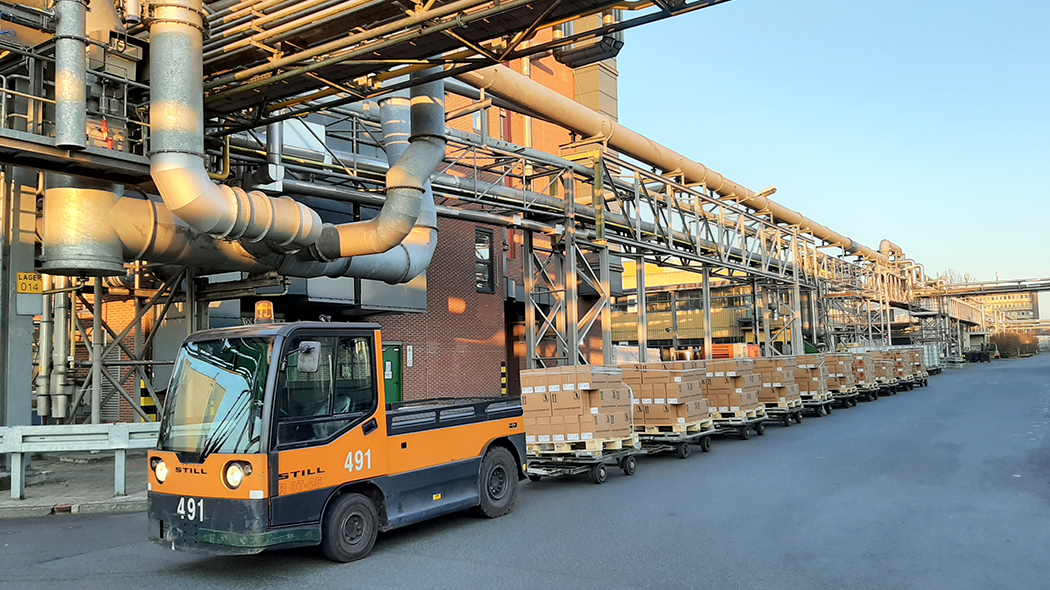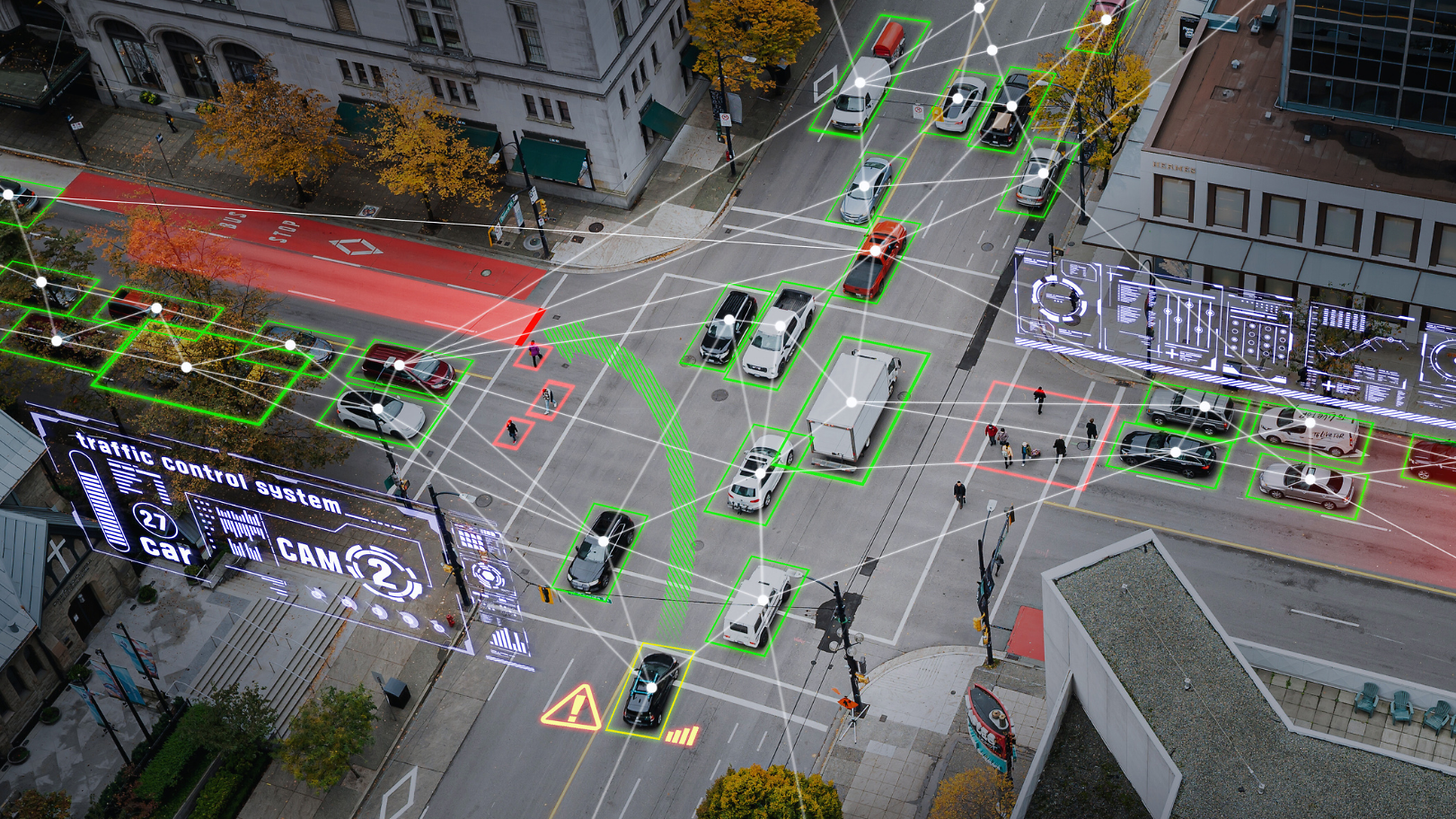Press IoT Service Buttons for Intralogistics 4.0
13.12.2021 by Annalena Rauen

Fewer costs due to unnecessary empty runs, more sustainability, more efficiency, more quality: setting these as its targets, Telekom developed an IoT solution for intralogistics at the chemicals company BASF Coatings.
The new Boeing 777 air freighter glides streamlined through the air like a shark in the sea. und Compared with its predecessors the long-range airliner saves around 3,700 tons of kerosene and nearly 11,700 tons of CO2 per year, and the sharkskin coating is manufactured by BASF Coatings. With its innovative surface coatings for aircraft and vehicles, the furniture industry and buildings Ithe Münster-based BASF subsidiary is a world market leader in the chemical industry. To continue making an in-house contribution to sustainability the company faced a difficult question.
Its Münster site covers a surface area of 400,000 square meters. Up to 450 trolley carts a day move around the site carrying raw materials and products, and coordinating them in a targeted way is a challenge.




